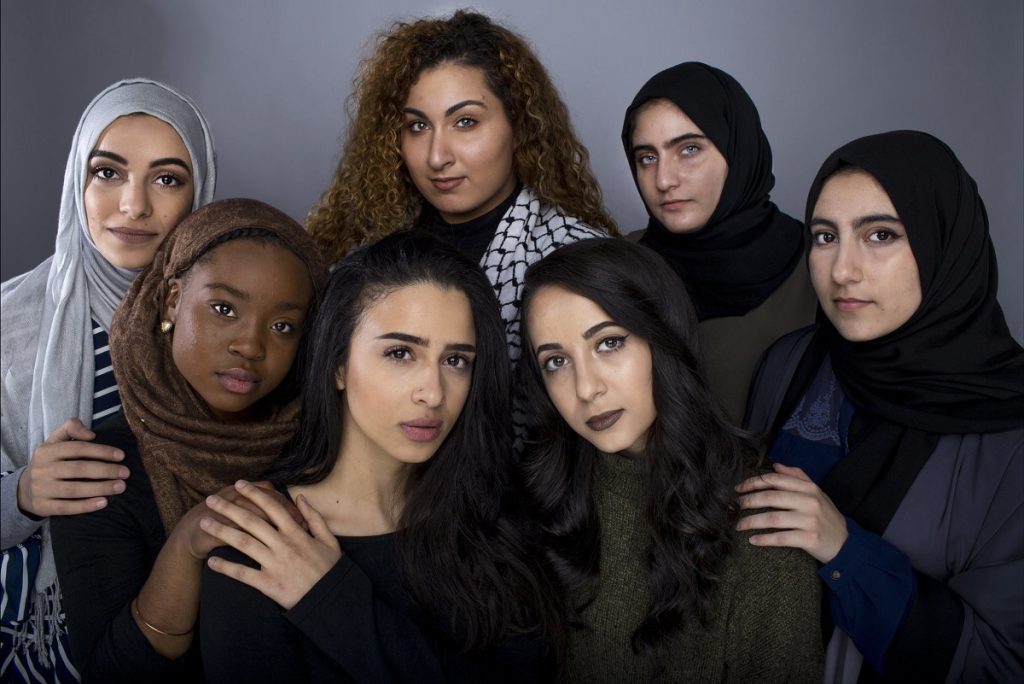Living in the United States as an Arab and Muslim woman involves a complex intersection of cultural identity, faith, gender expectations, and sociopolitical realities. Many of these women are immigrants or first-generation Americans who must adapt to a new environment while maintaining cultural and religious values.
They are students, professionals, mothers, activists, and entrepreneurs—contributing richly to American society. However, they also face distinctive challenges, often stemming from discrimination, stereotyping, and societal misunderstandings.
Key Challenges Faced by Arab and Muslim Women in the U.S.
1. Islamophobia and Visible Identity
One of the most pressing issues Muslim women face in the U.S. is Islamophobia, especially for those who wear the hijab (headscarf) or niqab. According to data from the Pew Research Center and Council on American-Islamic Relations (CAIR), visibly Muslim women are more likely to experience harassment in public spaces, airports, workplaces, and schools.
-
Many women report being stared at, insulted, or even assaulted because of their attire.
-
Hijabi women face microaggressions during job interviews or social interactions, where their intelligence or independence may be unfairly questioned.
Resilience: Despite this, many Muslim women view wearing the hijab as a source of pride, empowerment, and religious commitment—not as a limitation.
2. Cultural Misunderstandings and Stereotypes
Arab women are often caught between two worlds—misconceptions in the West and traditional expectations from within their own communities.
In the U.S.:
-
Arab women may be stereotyped as “oppressed,” “submissive,” or “backward,” which oversimplifies the diversity and agency many of them hold.
-
They often feel the pressure to “explain” their cultural or religious practices to others.
In their communities:
-
Some face pressure to conform to conservative expectations regarding marriage, career choices, or behavior—especially among immigrant families.
Balance and Identity: Many Arab and Muslim women in the U.S. create hybrid identities—blending modern American values with cultural and religious roots. This dual identity can be a powerful foundation for leadership and advocacy.
3. Workplace Discrimination and Career Advancement
According to studies by AAUW (American Association of University Women) and Arab American Institute, many Muslim and Arab women experience barriers in hiring, promotion, and salary equity.
-
Concerns over wearing the hijab or Arabic-sounding names leading to biased hiring.
-
Underrepresentation in leadership positions and limited mentorship opportunities.
-
Pressure to “fit in” by minimizing visible expressions of faith or culture.
Support networks: Initiatives like Muslim Women in Tech, Muslim Women’s Alliance, and university-based groups help provide mentorship, scholarships, and advocacy for workplace equity.
4. Access to Healthcare and Reproductive Rights
Arab and Muslim women often face language barriers, lack of culturally competent care, and bias in healthcare settings.
-
Issues of modesty, dietary restrictions, or family involvement in medical decisions can be misunderstood or dismissed.
-
Post-9/11 and during the COVID-19 pandemic, Muslim patients reported increased racial profiling and discomfort in seeking help.
Solutions: Culturally sensitive clinics and nonprofit organizations now serve many Muslim communities—such as ACCESS in Michigan and Karamah in Washington, D.C., which combine legal, health, and women’s rights services.
5. Mental Health and Social Stigma
Mental health remains a sensitive topic in many Arab and Muslim communities. Women often face pressure to appear “strong” or “silent” about struggles like anxiety, depression, or trauma.
Barriers include:
-
Social stigma around seeking therapy
-
Lack of Arabic-speaking or Muslim counselors
-
Cultural taboos around discussing domestic abuse or family issues
Progress: More mental health professionals now specialize in Islamic and Arab cultural contexts, and organizations like The Family & Youth Institute and Amala Hopeline are offering anonymous, faith-sensitive help.
Sources of Empowerment and Growth
Despite the challenges, Arab and Muslim women in the U.S. are thriving in many fields:
-
Politics: Figures like Rashida Tlaib and Ilhan Omar have broken barriers as Muslim women in Congress.
-
Media & Arts: Arab American writers, journalists, and filmmakers are reshaping narratives about Muslim identity.
-
Entrepreneurship: Many are leading small businesses in fashion, beauty, education, and tech, with strong community support.
From Marginalization to Leadership
The experience of Arab and Muslim women in the United States is marked by complexity, strength, and transformation. While challenges like Islamophobia, cultural misunderstanding, and discrimination persist, so too does resilience, pride, and growing visibility.
These women are not just surviving—they are leading. Through community organizing, political participation, and creative expression, they are building bridges between identities, generations, and cultures.
To support these communities, greater cultural sensitivity, inclusive policy, and representation are needed—not just from within, but from society at large.

